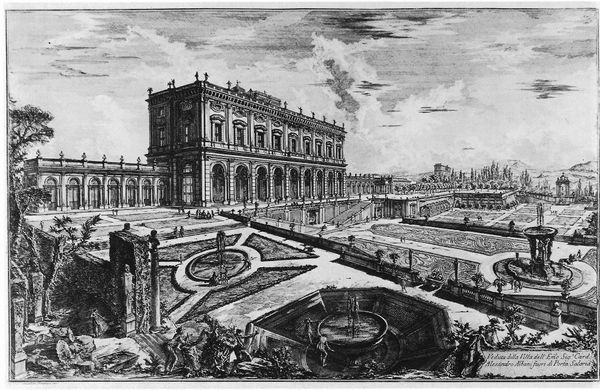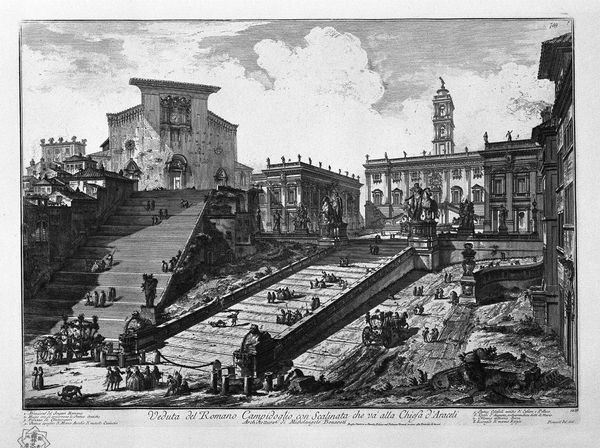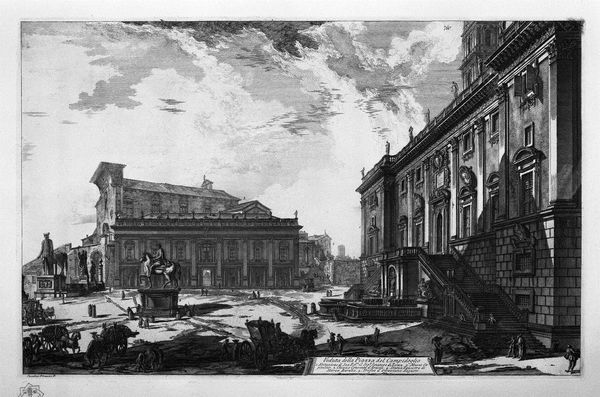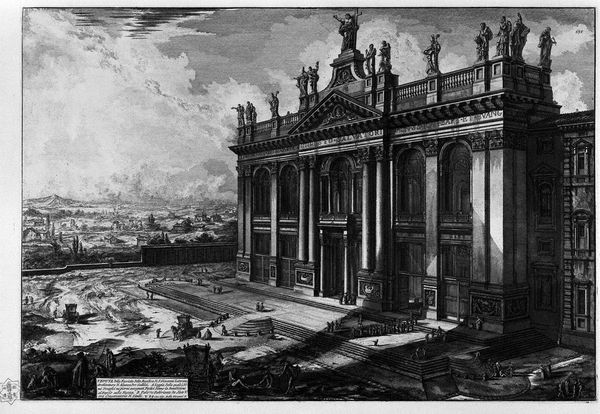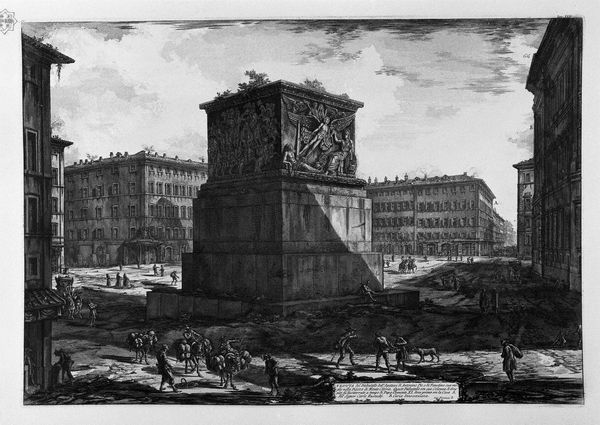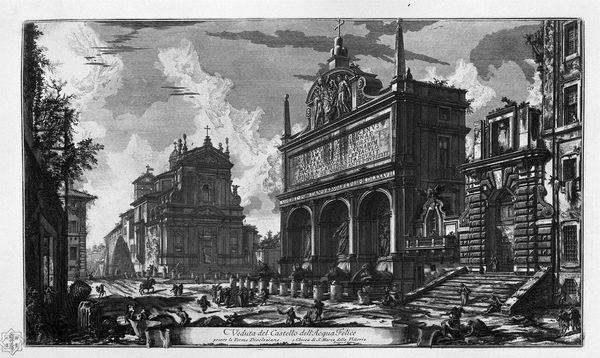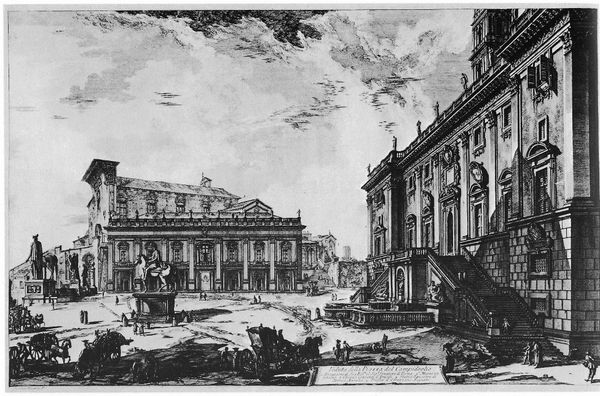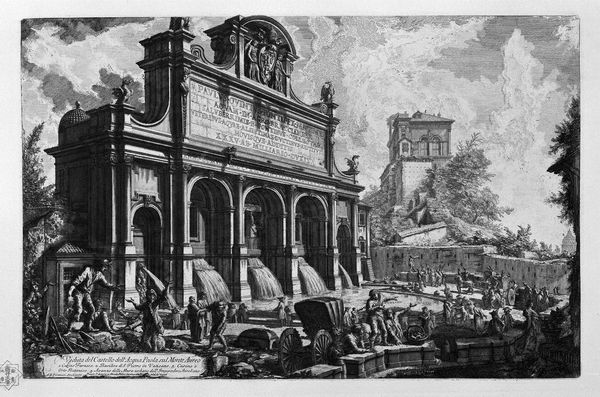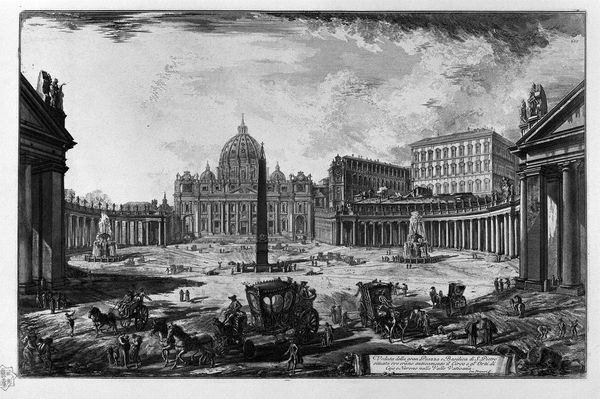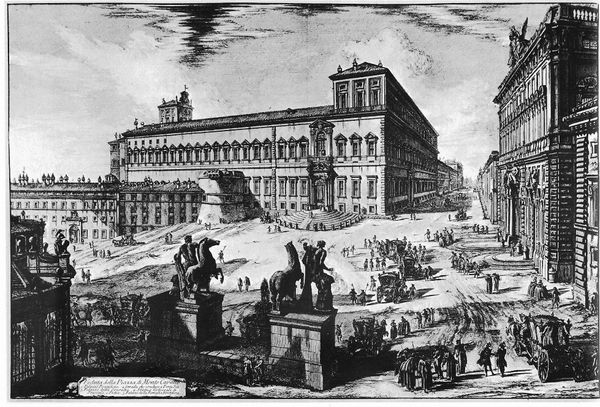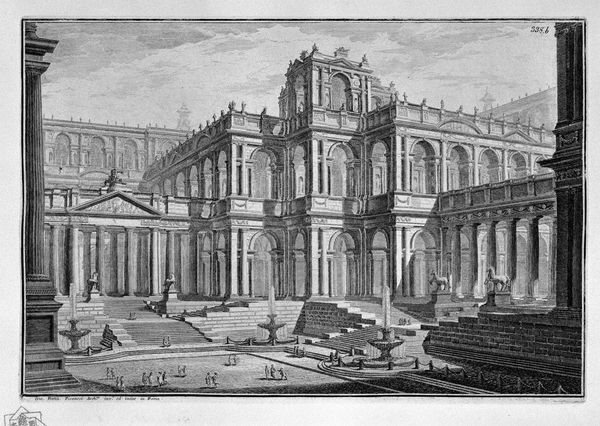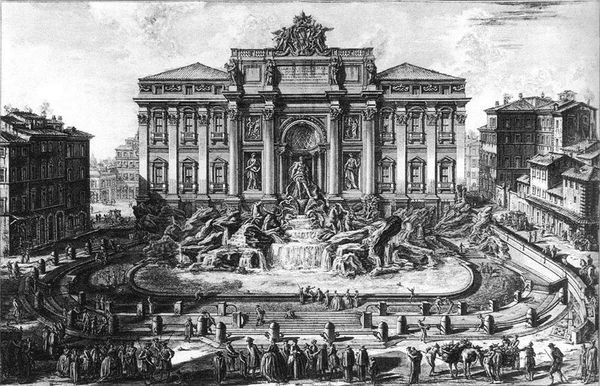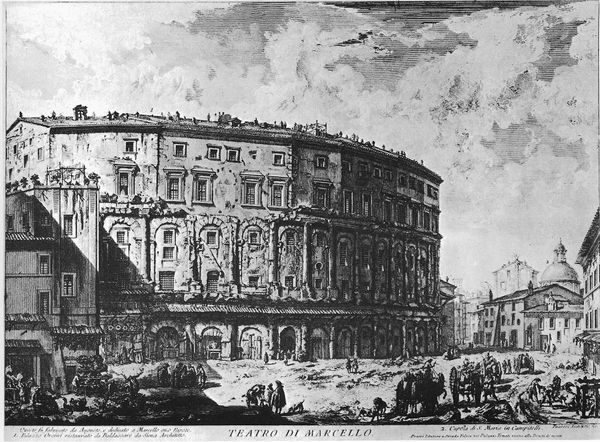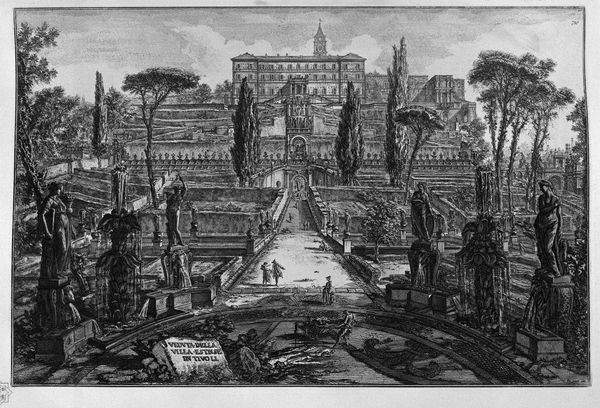
print, etching, engraving, architecture
#
baroque
# print
#
etching
#
landscape
#
column
#
cityscape
#
engraving
#
architecture
Copyright: Public domain
Editor: Here we have Piranesi's "View of the Palazzo Odescalchi," an etching and engraving of impressive detail. The sheer scale of the architecture is striking, especially the contrast between the rigid lines of the palazzo and the sprawling, almost chaotic arrangement of the figures in the foreground. What elements do you think define Piranesi's method here? Curator: I am most drawn to the labor inherent in its production, and the consumption of these images by a specific clientele. Consider the intricate etching process: each line a deliberate mark, replicated countless times. It's about making architecture accessible – transforming massive, privately owned structures into commodities available to a broader, albeit still elite, audience. This democratizing element, using a reproducible medium to disseminate images of power and wealth, interests me greatly. Do you see how the etching enables Piranesi to both celebrate and subtly critique the Roman elite? Editor: That's an interesting point. So the value lies not just in the artistic skill but also in its accessibility and reach due to the printmaking process. How does that connect to the social context? Curator: Think about the Grand Tour. These prints became souvenirs, markers of status, proving one had "seen" Rome. Piranesi wasn’t just creating art, but facilitating a form of cultural capital. And the labor! The paper, the ink, the press itself…all contribute to a narrative of production and consumption far removed from the grand facade of the palazzo itself. How does viewing it as a commodity change your perspective? Editor: I suppose it makes me consider who could afford these prints and how they were displayed. It wasn't just about aesthetics but also about participating in a visual culture of status and travel. Curator: Exactly. Piranesi provides not just a view, but access, a simulacrum of experience ready for the market. Editor: I hadn't considered the economic factors behind this. Thinking about the accessibility of printmaking certainly shifts the focus. Thanks! Curator: Indeed, considering the work as a confluence of labour, materials, and consumption can often reveal otherwise invisible aspects of art history.
Comments
No comments
Be the first to comment and join the conversation on the ultimate creative platform.
